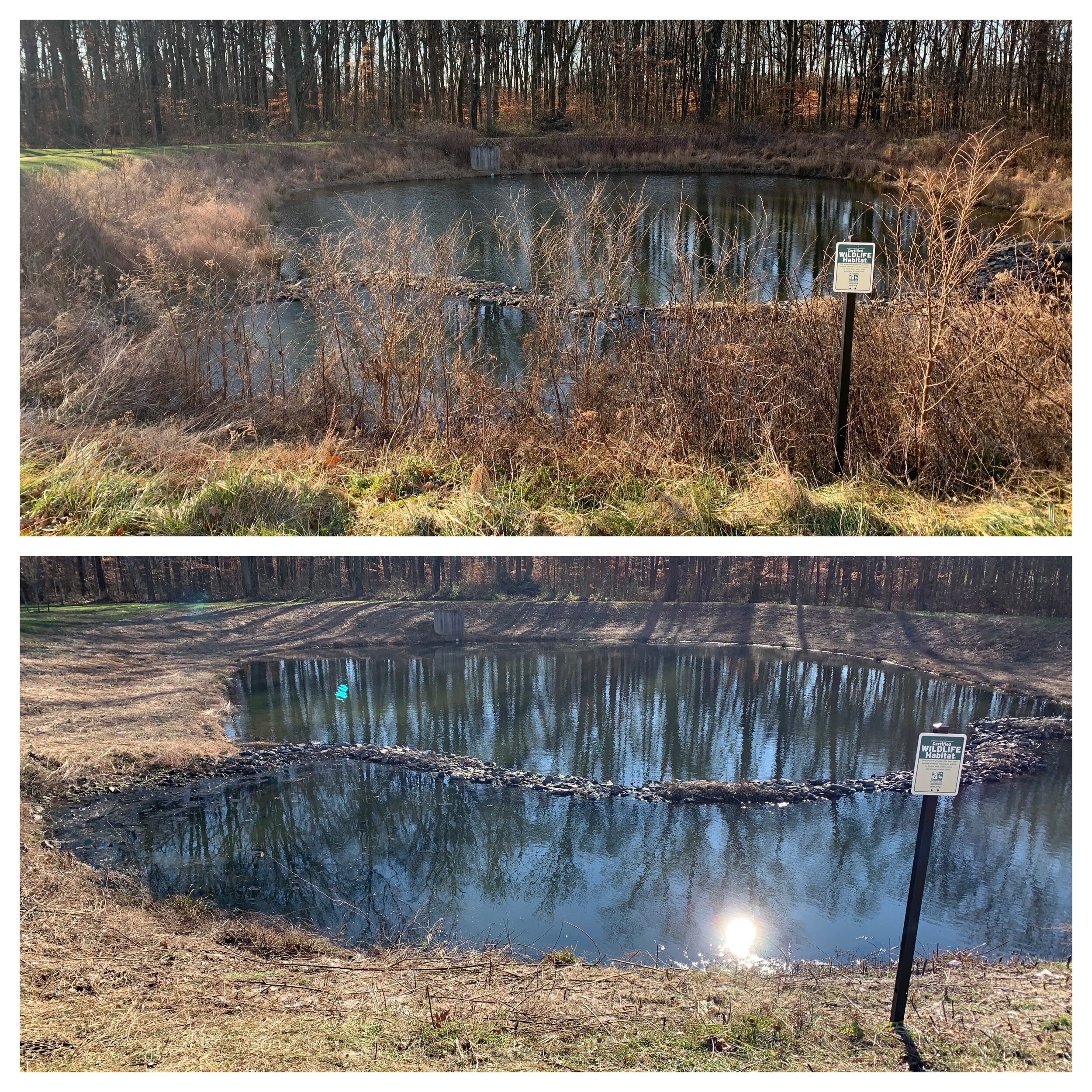Pond Owner's Winter Checklist:
With the heart of the winter upon us and the rash of significant winter storms we have had in the last few weeks, it is all but impossible to stop our minds from wondering back to the summertime, and nights spent by the water’s edge. While the cold winter months are technically “down time” for most pond owners and managers, there are several things that we can do to prepare us for the quickly approaching Spring.
1. Maintenance of fountain/ diffused air compressor –
“Aeration is the foundation of pond management” supplemental aeration whether it be a floating fountain, or subsurface system is a significant investment in the water quality and budget of any pond. Assuming your fountain has been removed from the water for the winter, each manufacturer has a list of routine maintenance tasks that are required to ensure that your system continues to function properly and aid in your pond’s health for years to come. Black Lagoon’s factory trained technicians perform routine maintenance varying from oil and seal changes, diaphragm replacements on compressors, to complete rebuilds throughout the winter months to guarantee our client’s systems are ready for Spring installation.
Shop Manager and factory certified technician, Steve Tomajer, performing a routine oil and seal change on an Aquamaster fountain.
2. Inspection of outlet structures –
Most ponds throughout the region have some form of outlet structure. These structures can be as simple as a corrugated pipe or weirs to a multistage structure used in stormwater management. Routine inspections of your outlet structure and keeping them unclogged and free of debris is highly recommended to ensure that your pond(s) do not flood. This is incredibly important during the late Winter and early Spring as snow melts and Spring shower add significant quantities of water as runoff.
The outlet of a southern New Jersey stormwater pond free of all debris allowing water to freely flow out of the pond
3. Maintenance of riparian buffer –
The riparian buffer of a pond is the vegetated area surrounding a pond which can help with the filtering of nutrients from runoff before it enters the pond; usually composed of grasses, shrubs, emergent aquatic vegetation. During the winter months, this vegetation becomes dormant and active growth stops, making it the perfect time to trim and prune any nuisance growth. By removing excess growth from the buffer, you can cut down on the amount of thatch that is present come springtime, you can also inspect the area for any new or existing invasive species that may be present.
A before and after image of a recently managed riparian buffer utilizing a Ventrac tough cut mower.
4. Early season plant and algae inspection
While the bulk of nuisance growth from aquatic plants and animals occurs during the warmer, summer months, there are several species of plants and algae that can grow even during the coldest winters. Plants like curly-leaf pondweed (Potamogeton crispus) and coontail (Ceratophyllum demersum) have unique life cycles and often begin growing in the fall months and continue throughout the winter even under ice cover. Similarly, several cold-water green algae exist, the most common being Spirogyra, or silk algae which can form large, bright green filamentous mats. Understanding what plants and algae is actively growing in your pond can be crucial when starting/implementing a management program.
5. Education –
With the winter being the off season for pond owners and managers alike, there are several educational opportunities available for interested persons. Non-profit organizations like the Northeast Aquatic Plant Management Society (NEAPMS) and Pennsylvania Lake Management Society (PALMS) hold their annual conferences during these months. Educational opportunities also come in the form of numerous webinars that various academic or state agencies may present (some of which are at a cost to the public). Having an educated pond owner can aid the manager in establishing management objectives and decisions.


